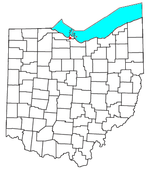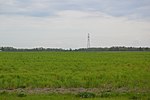Port Clinton, Ohio
Cities in OhioCities in Ottawa County, OhioCounty seats in OhioOhio populated places on Lake Erie

Port Clinton is a city in and the county seat of Ottawa County, Ohio, United States, located at the mouth of the Portage River on Lake Erie. The population was 6,025 at the 2020 census. It is the principal city of the Port Clinton micropolitan area, about 34 miles (55 km) southeast of Toledo. The city has been nicknamed the "Walleye Capital of the World", due to the productive fishing waters for the species lying offshore in Lake Erie's Western Basin. The annual Walleye Drop on New Year's Eve in downtown Port Clinton reflects this nickname.
Excerpt from the Wikipedia article Port Clinton, Ohio (License: CC BY-SA 3.0, Authors, Images).Port Clinton, Ohio
Jefferson Street,
Geographical coordinates (GPS) Address Nearby Places Show on map
Geographical coordinates (GPS)
| Latitude | Longitude |
|---|---|
| N 41.509722222222 ° | E -82.940277777778 ° |
Address
Ottawa County Courthouse
Jefferson Street
43452
Ohio, United States
Open on Google Maps








